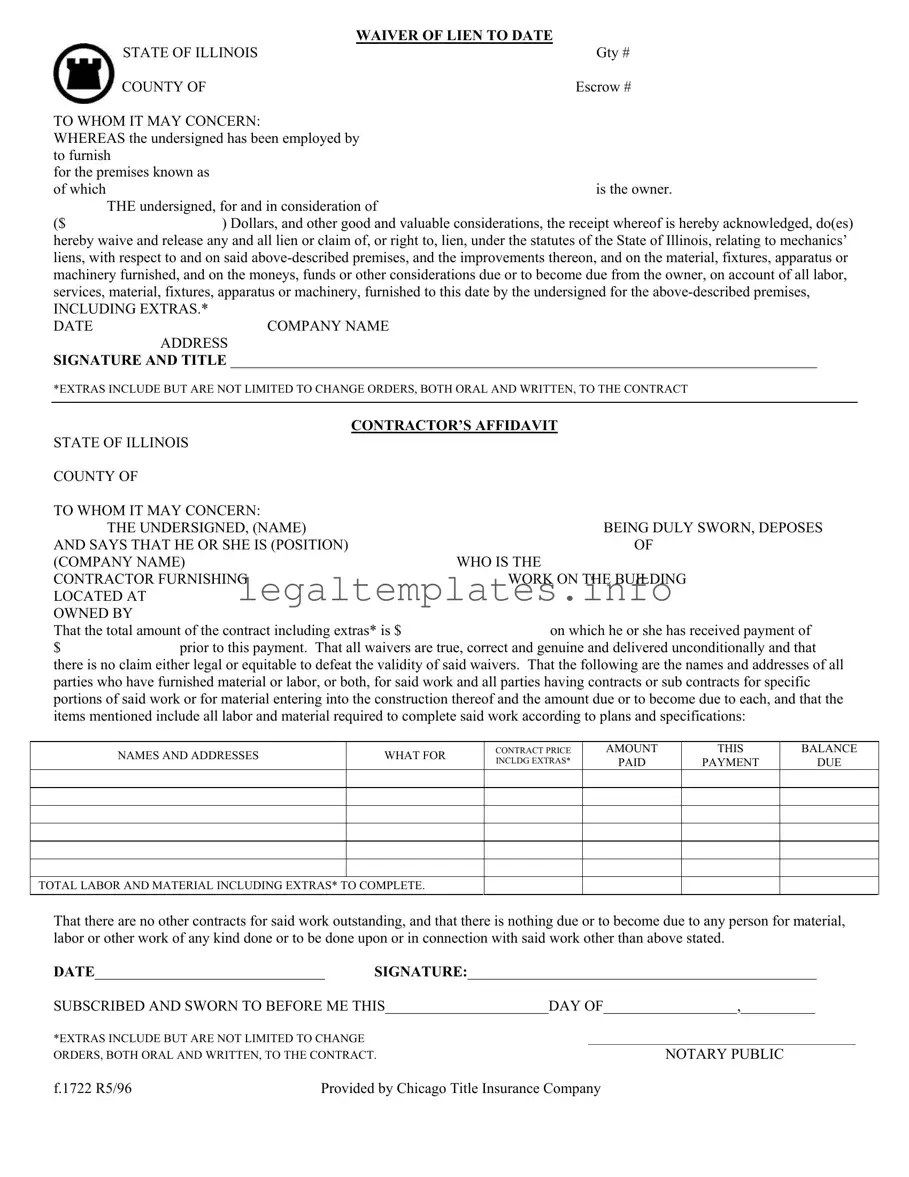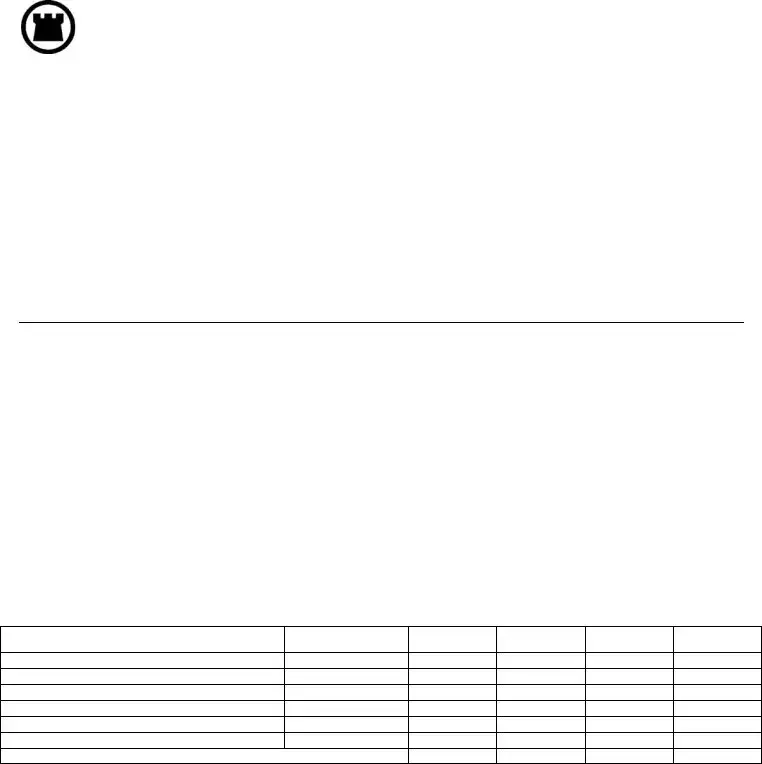The Partial Waiver of Lien form is closely related to the Chicago Title Waiver Format, as both serve to relinquish rights or claims over property, most commonly used in construction projects. While the Chicago Title Waiver explicitly releases any future claims on property upon receipt of a specified payment, a Partial Waiver of Lien typically releases lien rights to a certain point in the construction process without giving up all future lien rights, contingent on receiving further payments.
Final Waiver of Lien forms also share a strong resemblance with the Chicago Title Waiver Format, as they both are instruments of releasing claims or rights. The key distinction is that a Final Waiver of Lien is used at the completion of a project to signify that all payments have been made and that the contractor or supplier waives any right to place a lien on the property, indicating no further claims can be made.
Conditional Waiver and Release Upon Progress Payment documents are similar to the Chicago Title Waiver Format in that they both deal with the relinquishing of lien rights under certain conditions. This specific type of waiver is given before a progress payment on a construction project, indicating that lien rights are waived to the extent of the payment received, contingent upon the clearance of that payment, thus offering a conditional release similar to aspects of the Chicago Title Waiver.
Unconditional Waiver and Release Upon Progress Payment forms, while akin to the Chicago Title Waiver Format in their function of lien release, differ as they provide an unconditional waiver post-payment. This means once a payment has been made in the construction process, the signer unconditionally waives any right to file a mechanics lien for the amount specified, regardless of any potential disputes or issues, contrasting with any conditions that might be applied in the Chicago Title Waiver.
The Mechanics Lien Release form parallels the Chicago Title Waiver Format as it serves the purpose of removing a previously filed mechanics lien from the property records. It is executed once the claimant has received payment or satisfaction of the claimed amount. This form is a follow-up action that clears the property of the lien, ensuring the owner faces no legal obstacles in the sale or financing of the property, similar to preemptively avoiding such claims with the waiver.
Notice of Intent to Lien, while not a waiver or release, is relevant in its connection to documents like the Chicago Title Waiver Format as it is a precursor in the lien process. It signals a potential claimant's intention to file a lien if payment is not received, serving as a warning. Understanding this document's role emphasizes the importance and impact of executing lien waivers, as they prevent such claims from escalating.
The Contractor's Affidavit, as seen part of the Chicago Title Waiver Format, is another document with significant similarities, focusing on declaring the status of payments, the completeness of work, and the involvement of subcontractors and suppliers. This affidavit is essential for confirming the information stated in lien waivers, providing transparency and assurance that all parties have been paid or will be paid, thereby preventing future liens.
Release of Claim of Mechanics Lien form directly corresponds with the Chicago Title Waiver Format's purpose, as it is explicitly used to discharge a property from the claims of a mechanics lien once the claimant has been paid. This document is the conclusive step in removing any encumbrance a lien places on a property title, ensuring clear ownership, similar to how the waivers prevent such claims from arising.
A Claim of Lien document, though it serves the opposite function, is inherently linked to the nature of the Chicago Title Waiver Format, as it formally establishes a lien against a property for unpaid work. Understanding this form highlights the preventative value of lien waivers in avoiding legal complications and ensuring all parties are rightfully compensated, thereby maintaining clear property titles.
The Lien Satisfaction or Lien Release form, distinct yet fundamentally connected to the Chicago Title Waiver Format, is used when a lien filed on a property needs to be formally removed post-payment. It is the conclusive evidence required by property records that a lien has been satisfied, correlating with the preventative measure of lien waivers in managing the financial obligations related to property improvements.

